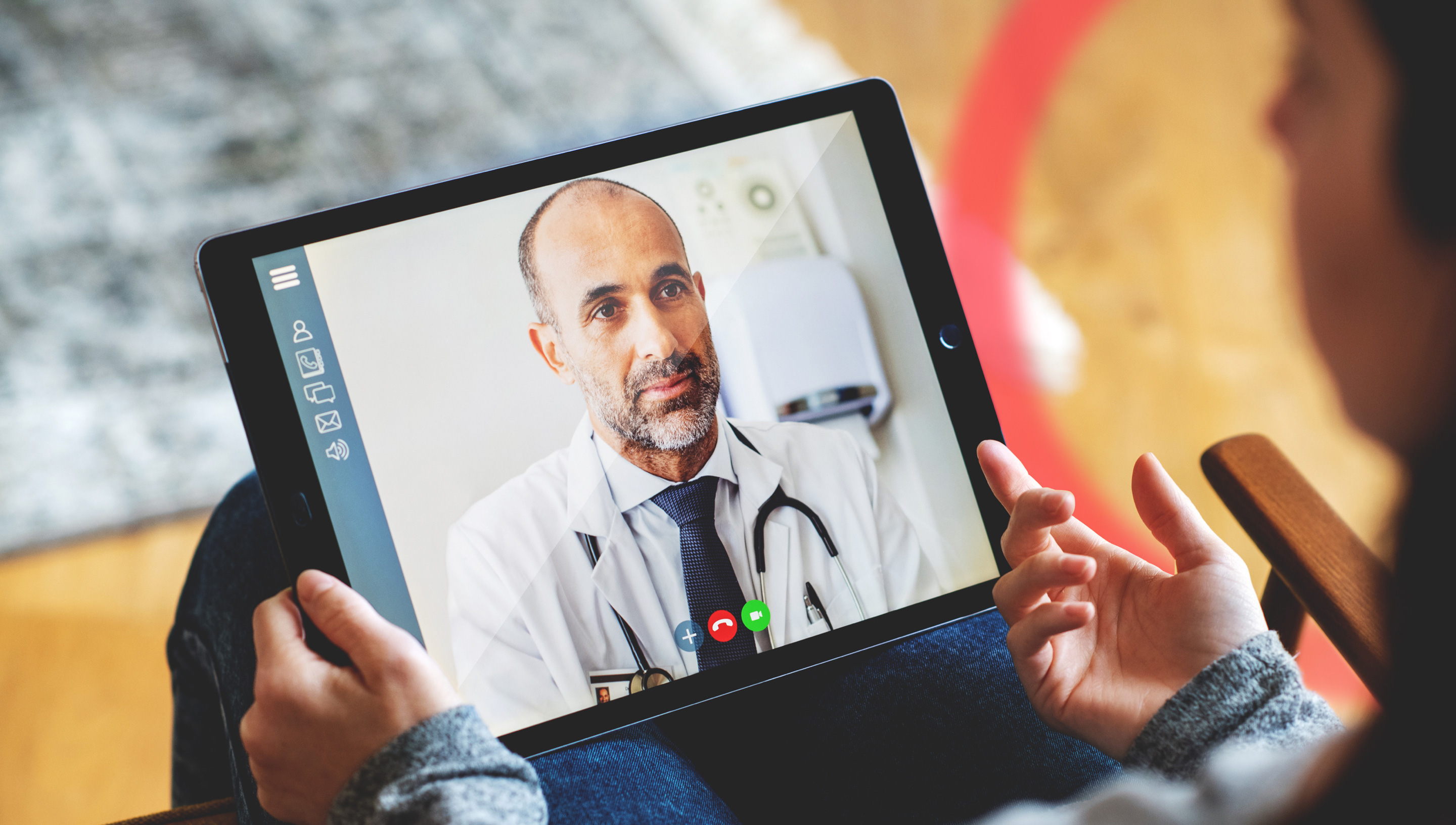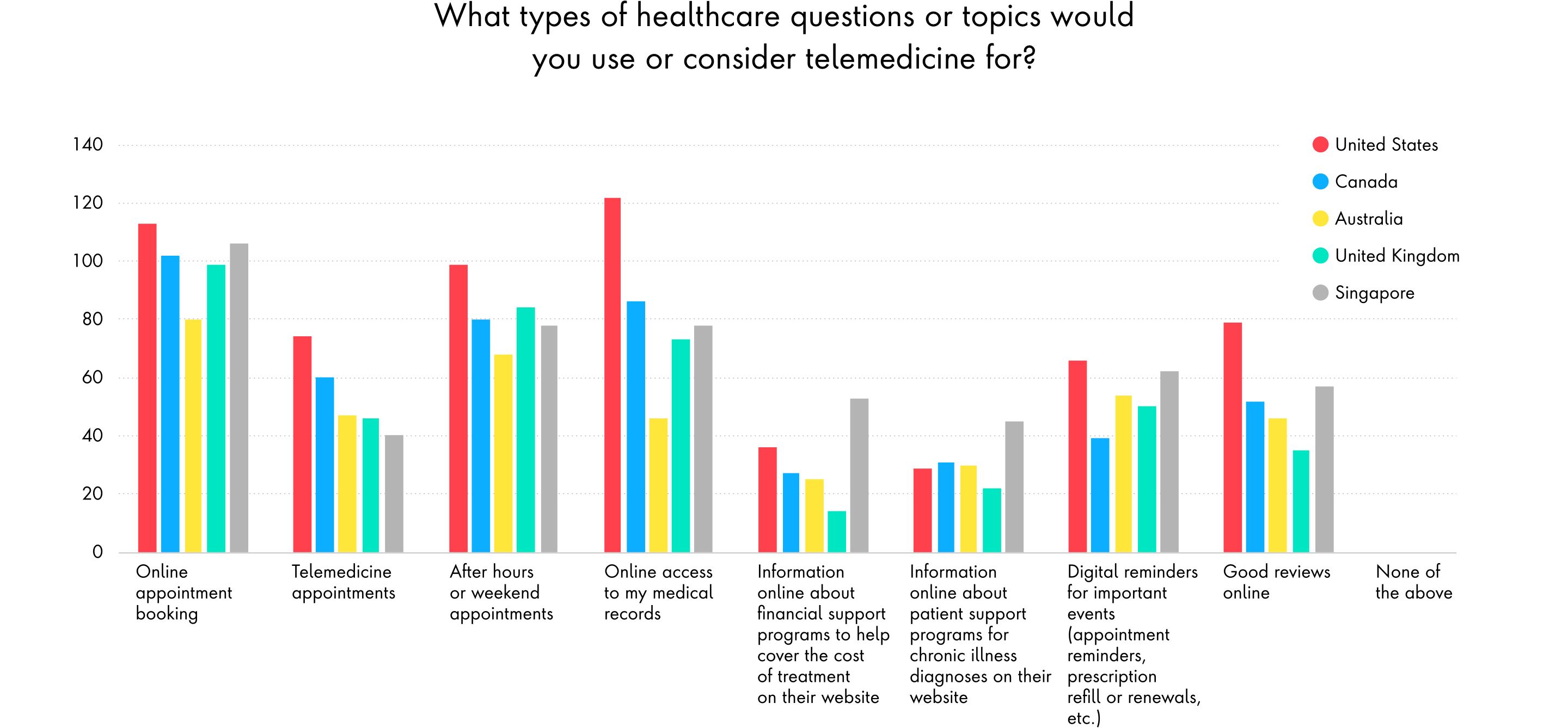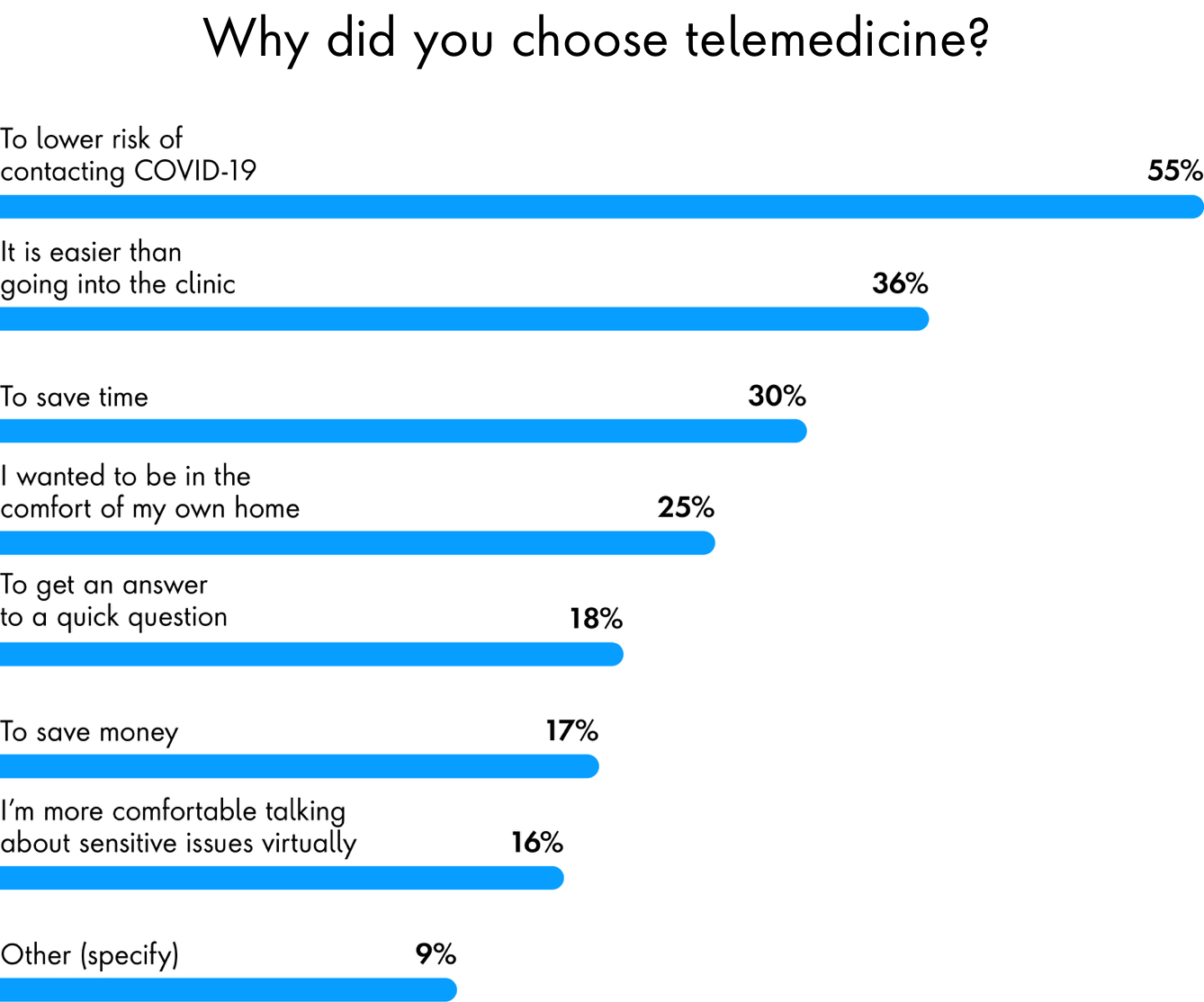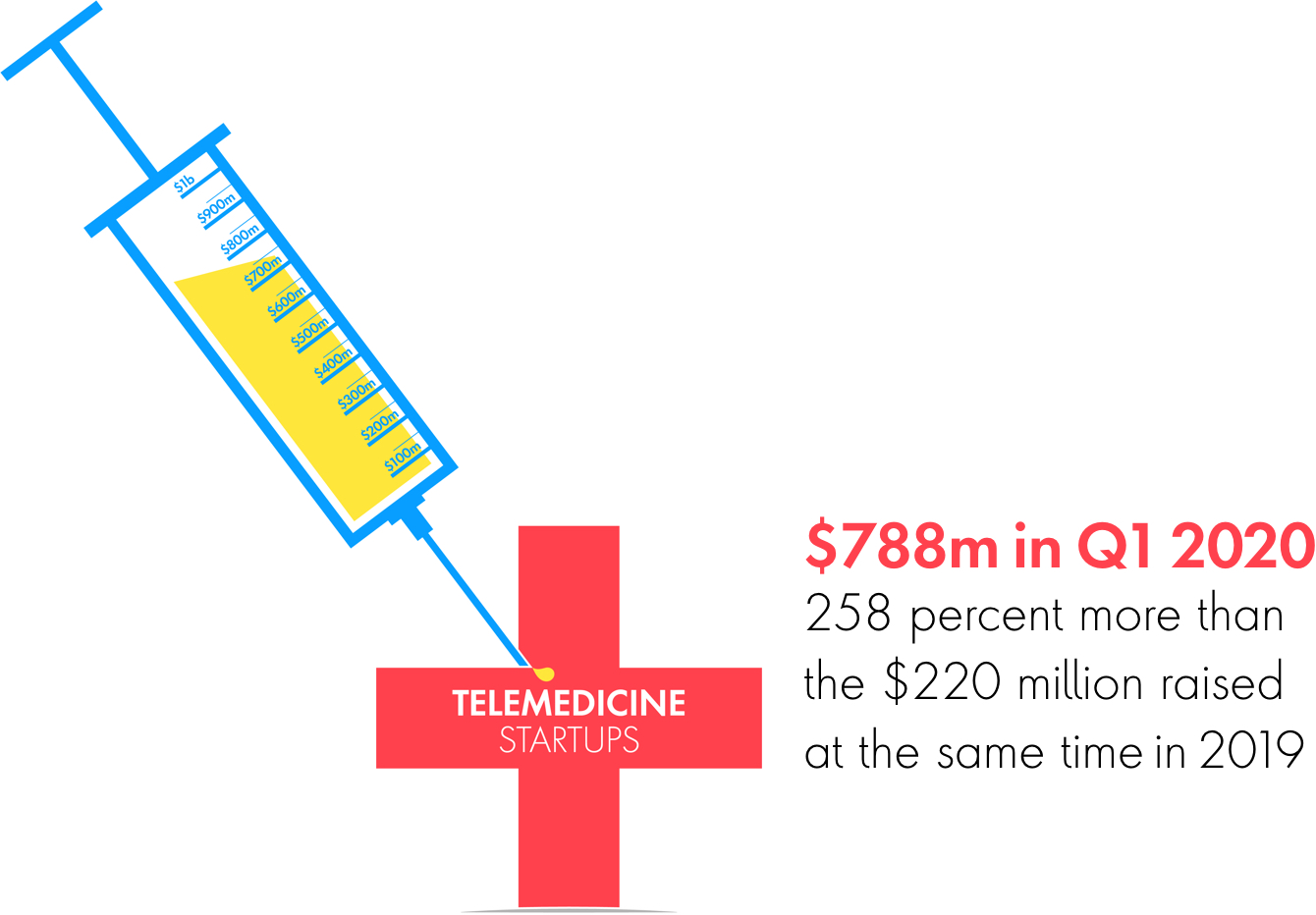What issue can we solve for you?
Type in your prompt above or try one of these suggestions
Suggested Prompt



Health
Seamless Health: A Platform Approach to Patient Care
Seamless Health: A Platform Approach to Patient Care
In a moment of clear market disruption, organizations that deliver fully integrated virtual healthcare experiences spanning multiple platforms will benefit from new market share and customer loyalty.
Summary
Healthcare transformation requires careful alignment of three key concepts:
· Embrace a service design approach: Develop a data-driven understanding of how patients use digital tools and widen the spectrum of digital services to meet new customer needs.
· Understand the power of new platforms: A platform approach can use data to create intelligent, highly personalized experiences that connect different services under one shared touchpoint. If patients do not feel like their providers understand who they are, experiences will fall short of expectations.
· Apply transformation across the organization: From developing new cloud-based platforms to new operational processes, emerging market leaders must focus on flexibility, speed and a constant evolution to cut through existing internal systems that often reside in silos.
Comfort and convenience largely drive consumer demand. The same consumers who have grown accustomed to high quality, on-demand services from bankers, grocers and other essential service providers are now expecting the same digital experiences when interacting with their healthcare providers.
In less than a year, increased demand for telehealth services sparked by COVID-19 prompted consumers to catch up with what the healthcare industry has spent at least a decade preparing for.

Data from Publicis Sapient’s Digital Life Index shows that of patients who use telehealth, 79 percent tried the service for the first time over the first six months of 2020, with patients expressing interest in using telehealth more in the future. Physicians have also needed to use telemedicine this year, benefiting from its ability to create personal experiences while remote.
What happens next will define the market’s winners. Across the healthcare spectrum, companies are recognizing that patient-centered care means deploying new operating models, industry partnerships, sophisticated data sharing and a new approach to platform development.
An interoperable healthcare system
Increased healthcare cost and competition, shared ownership of health outcomes and a proliferation of data and artificial intelligence (AI) have blurred the lines that have traditionally defined healthcare organizations.
Now, these elements are becoming even more intertwined, with value generated in a cycle rather than in silos. Improved data and AI lead to developing better products and services, which improves customer experience, resulting in patient loyalty and increased return-on-investment.
Patients are looking for more digital health services, with sector-wide implications:

“Healthcare companies are reinventing traditional domains of where they work inside the health ecosystem and it's essentially being fueled by platform interoperability.”
Hugo Manassei , GVP, Healthcare Transformation
“If a healthcare organization does not have ability to engage other platforms, patients will only have a transactional engagement with you. This significantly impacts the organization’s ability to deliver on its stated purpose, significantly impacts the bottom line and prevents building and maintaining meaningful relationships.”
Providers can secure a connected healthcare ecosystem by expanding services that move toward a common goal and continuous innovation. Medical device companies, for example, are not just developing platforms dedicated to training healthcare providers or patients, but services that sit alongside the provider and patient through every stage of the care journey – including digital experiences that guide patients through procedures traditionally carried out in hospitals. Telehealth is no longer just a virtual call, but a seamless experience that links patients and specialists to the hospital network, increasingly with services like pharmacy delivery and home monitoring devices. On the backend, data-connected systems and API-based technical services provide a single source of truth.

“On the face of it, these new seamless healthcare experiences are driven by simplicity and convenience, with cost being a significant driver too,” Manassei said. “Healthcare companies have never had a full understanding of the real patient experience – the one that happens between physician/patient visits."
"The data collected across these multi-platform driven experiences gives us an entirely new and complete data story about the patient, valuable for the entire healthcare ecosystem. That is a holy grail in terms of being able to improve health outcomes.”
Hugo Manassei , GVP, Healthcare Transformation
Consolidation and partnerships
To iron out inefficiencies and put technology to work, healthcare organizations need to see the big picture. Because pharmaceuticals, providers and insurance companies have historically remained separate operationally, the pursuit of a seamless system relies on building infrastructure to support new services or collaborating with the right industry partners.
“There's going to be consolidation of what a healthcare organization does, with change from being very proactive in healthcare rather than reactive, using huge amounts of underlying data to provide frictionless experiences for patients,” Nader Nakib, GVP, engineering, Publicis Sapient, said. “We’re going to see mergers where organizations are looking to provide services in a very seamless way.” A clear understanding of market potential and internal data gaps is critical, Manassei said.
“Different parts of the business may not be talking to each other, with internal ecosystems that are not being tied together efficiently.” Rectifying these challenges and creating these “internal partnerships” first can help identify where a company would benefit by optimizing processes in-house and where potential third-party partners could bring value.

Market disruptors could also change the tide. There has been significant investments in telemedicine this year, with start-up companies receiving upward of $788 million in Q1 2020 – 258 percent more than the $220 million raised at the same time in 2019. According to Mercom Capital, mergers and acquisitions continue to remain popular, with 83 digital health companies acquired over the first half of 2020.
These moves often come with complementary services in mind. For example, when telehealth company Teladoc announced their $18.5 billion merger with digital health management organization Livongo in October 2020, the companies described their joint mission to create a “longitudinal relationship that brings [together] multiple professionals, digital assets and data science,” that would connect doctors, patients and providers with the services they need to provide long-term virtual care.
“The healthcare space is going to change in such a rapid way over the next 10 years,” Nakib said. “And hopefully, people will become healthier because of it.”
Nader Nakib , GVP, Engineering
Personalized experiences have never been more critical. With a seamless health ecosystem, organizations can use data to understand how and where patients seek care and curate experiences based on individual needs over time, with digital tools they use every day.




